
by Kaye Dee
“Standby for Action!” is the dramatic opening line of the opening titles for Gerry and Sylvia Anderson’s most recent marionette science fiction series, Stingray, which then go on to promise us “Anything can happen in the next half hour!” And with over 39 episodes of undersea adventure Stingray lives up to that promise.
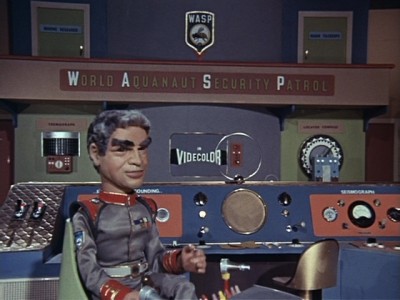
World Aquanuat Security Patrol Commander Shore warns us that “Anything can happen in the next half hour” in the Stingray opening titles. Note the caption “in Videcolor” in the background, telling even viewers watching in in black and white that the show is made in colour
Stingray completed its first Australian screening run a few weeks ago on June 9, having commenced on the national broadcaster, the Australian Broadcasting Commission (ABC), on September 16, 1964. As I’ve recently discovered from my friend at the ABC, this was, unusually, three weeks before the show commenced screening in Britain: as you might recall from my article about the long-delayed arrival of Doctor Who in Australia, we are more likely to be months, if not years, behind in screening television series from overseas. In fact, the Andersons’ earlier series, Fireball XL5, still hasn’t arrived on our shores, but I’ve heard that it will be shown on one of the commercial television channels later in the year.

The Stingray, series title. I’ve read that Gerry Anderson said an undersea show was the next logical step after the land and space exploits of his earlier series Supercar and Fireball XL5
Although I haven’t yet seen Fireball XL5, I discovered Stingray alongside the Andersons’ first Supermarionation puppet creation Supercar, which has been repeated this year on the ABC after first screening in 1963. While Supercar is good kiddie fun (thanks to my niece and nephew for introducing me to both these shows), Stingray shows an order of magnitude of improvement, technically and in the imaginativeness of its storyline.

Stingray, the most advanced submarine of 2065 and titular star of the show
Stingray is a science fiction undersea adventure series, set in the twenty first century (in 2065, as one episode informs us), following the exploits of the crew of Stingray, the most advanced submarine in the World Aquanaut Security Patrol (better known as WASP), one of the armed services of the World Government, charged with policing and protecting civil activities on and under the world’s oceans. However, in Stingray’s world, there are many peoples and civilisations under the sea and, although they have been largely unknown to the surface world previously, many of them have become angered by the “terrainean” exploitation of the resources of the oceans.
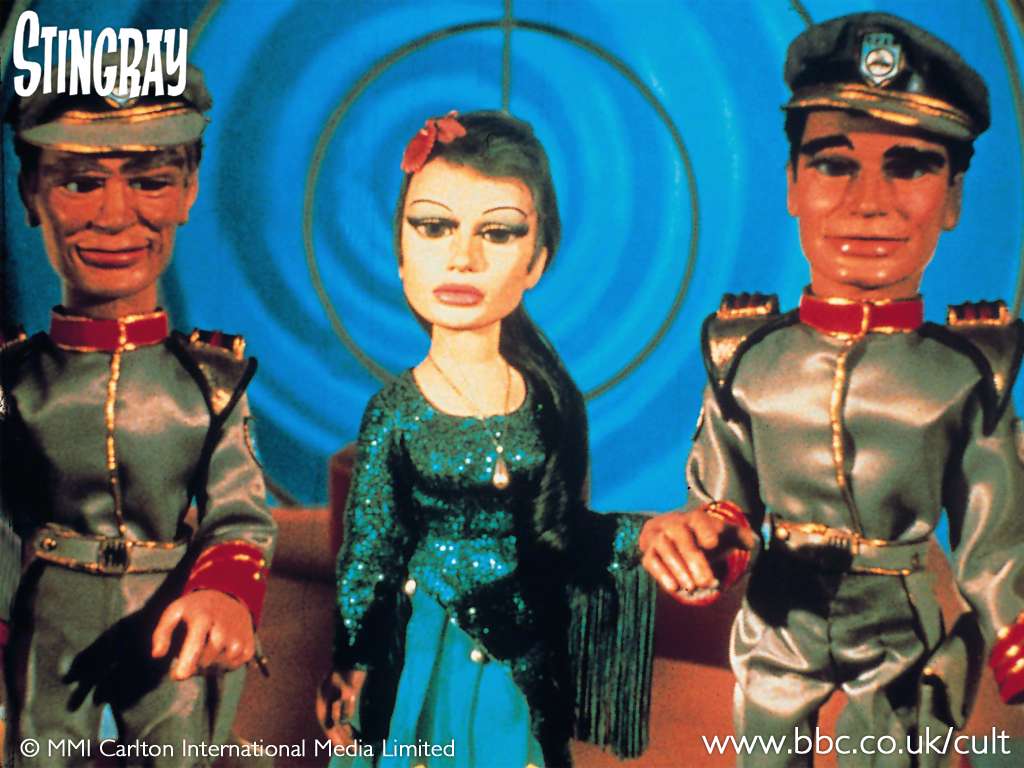
The Stingray crew, Troy Tempest, Phones and Marina, the mysterious woman from the sea.
In the first episode, the crew of Stingray, Captain Troy Tempest and his navigator/hydrophone operator, nicknamed “Phones” (apparently his full name is given in the promotional material for the series, but it never gets mentioned on screen), are captured by Titan, King of undersea city of Titanica. When his god (represented by a giant fish that looks like a cross between a grouper and a coelacanth!) rejects Troy and Phones, Titan condemns them to death, but they escape, aided by Marina, the mute daughter of the ruler of another undersea kingdom, whom Titan has been keeping as his slave. Marina returns with Troy and Phones to the WASP home-base of Marineville and becomes a member of the Stingray crew, using her knowledge of the undersea world to assist in their missions.
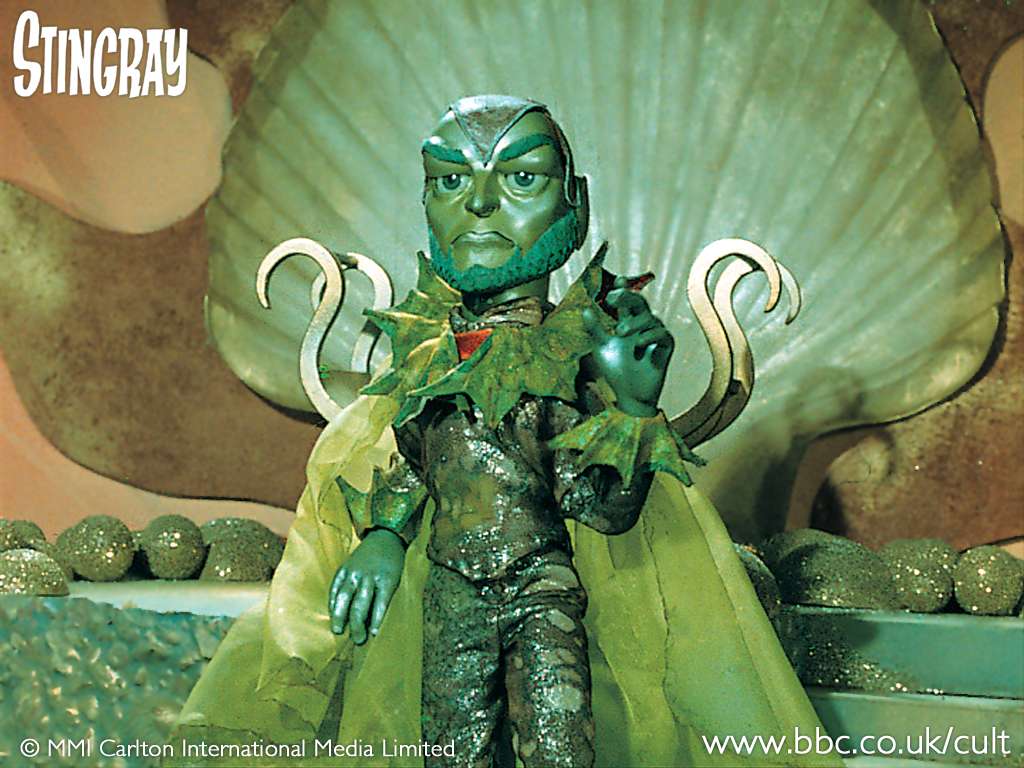

Titan, the evil King of Titanica, the arch-enemy of the Stingray crew, and his minions, the Aquaphibians.
This sets the stage for the series, with Titan and his creepy henchmen X-20 and the Aquaphibians, becoming the WASPs’ main undersea adversaries. While many stories involve battles with, or thwarting plots against, the WASP, or the surface world in general, by Titan and his allies, there is plenty of other action for the Stingray crew as well: we see them involved in exploration, participating in marine archaeology, undertaking rescue missions, investigating piracy and terrorism, assisting undersea peoples, becoming embroiled in international diplomacy and even discovering the truth about the Loch Ness Monster! Of course, being a children’s show, some of the stories are silly, and there are too many ‘dream episodes’, where strange things happen, for my taste – but many have a tongue-in-cheek humour that can be appealing to adults, and others touch on grown-up ideas such as whether or not we should exploit the mineral resources of the ocean floor.
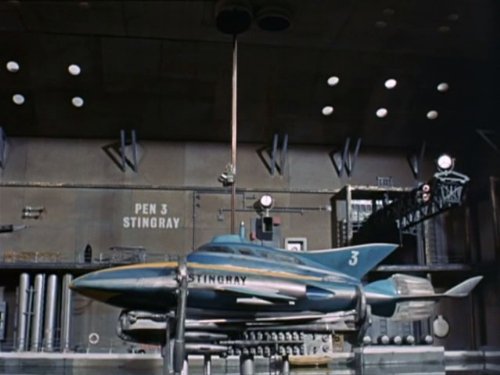
Stingray in its pen under Marineville, awaiting the call to “Action Stations”
Unlike many kids’ adventure shows, the storyline is not completely static but has some developments over time, with Marina being initially somewhat under suspicion as a possible agent of Titan, but gradually becoming accepted, especially by Atlanta Shore, who was romantically involved with Tempest before Marina arrived on the scene. Troy finds himself enthralled by Marina but seems unable to make up his mind between the two women. It must be a first for a children’s television show that it not only portrays a ‘love triangle’ but also makes it the focus of its closing credits, which incorporate the love song “Aqua Marina”.
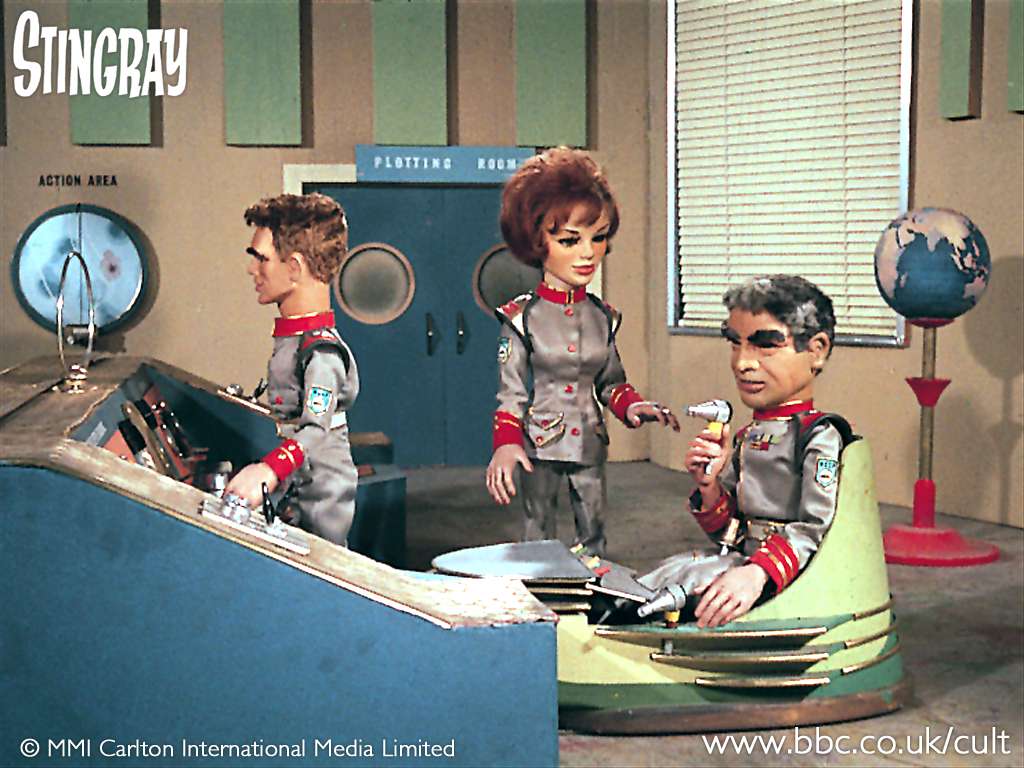
Atlanta Shore, Troy’s original love interest and her father WASP Commander Sam Shore in Marineville Control. A person with paraplegia in a hovering ‘wheelchair’ as a military commander has to be a role model for disabled children: in the future you can do anything!
I also find it interesting that Stingray includes two handicapped characters among its main cast, both of whom are shown to be vital members of the WASP. Marina may be mute – and episodes deal with her crewmates wanting to help her learn to speak, and the problem of Marineville Control communicating with Marina by radio – but she is intelligent and more than capable of rescuing Troy and Phones on more than one occasion. The Commander of the WASP, Sam Shore, is a paraplegic, who gets around using a hover chair – and an entire episode is devoted to the story of how he was crippled on active duty — but he is in overall charge of the organization. These have to be heartening role models for children afflicted by polio and other disabilities.

Gerry and Sylvia Anderson and some of the Stingray production team with one of the models of Stingray
Stingray is impressive technically. Those dramatic opening statements at the beginning of the title sequence introduce a series of action shots of Stingray, a lot of explosions, Stingray’s home base Marineville going to red alert (which means the entire base sinking underground and ICBM’s being deployed into launch positions), and an amazing scene of Stingray leaping out of the water, chased by one of Titan’s submarines in the shape of a gigantic mechanical fish. And it’s all accompanied by a staccato, jazzy theme that really works with the visuals.
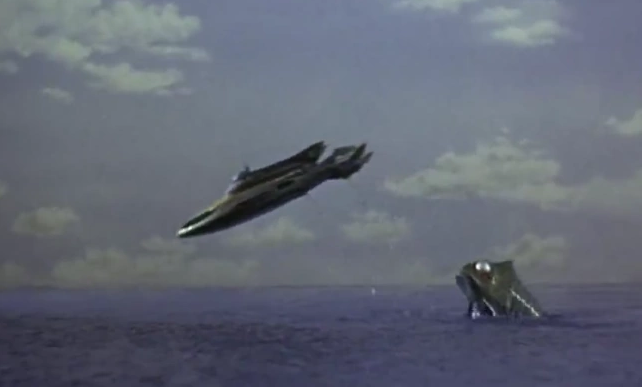
I’d love to know how they created this dramatic scene of Stingray leaping out of the water, chased by one of Titan’s submarines
The models of futuristic submarines, aircraft and other technology of the twenty first century are beautifully detailed, and the finely crafted miniature sets perfectly match the size of the marionettes, which I understand are about 20 inches tall. I’ve read that the AP Films production team moved into a completely new studio to produce Stingray, which included two sound stages, so that they could shoot two episodes at a time, plus a special stage for filming special effects and huge indoor tanks for filming ocean surface scenes. The ‘underwater’ scenes are apparently shot on a dry set, but filmed through a special fish-filled aquarium in front of the camera, to create a forced perspective of an undersea environment: the kids certainly think it has actually been filmed underwater.

The beautifully detailed model of WASP Headquarters Marineville. The sequences of parts of the base sinking underground during an alert are really impressive
I like the Stingray marionettes, too: they are less caricatured than in Supercar, in fact some of them look like they’ve been modelled on real people. The Troy Tempest puppet reminds me of James Garner, and badguy X-20 looks – and sounds – a lot like Peter Lorre! The puppet faces are also given added realism by having glass eyes, unlike the painted eyes of the earlier puppets. Something I find really interesting is that the marionettes can apparently be fitted with different heads, sculpted so that the face is smiling or frowning, which allows them to express emotion in a way that wasn’t possible in the earlier puppets.

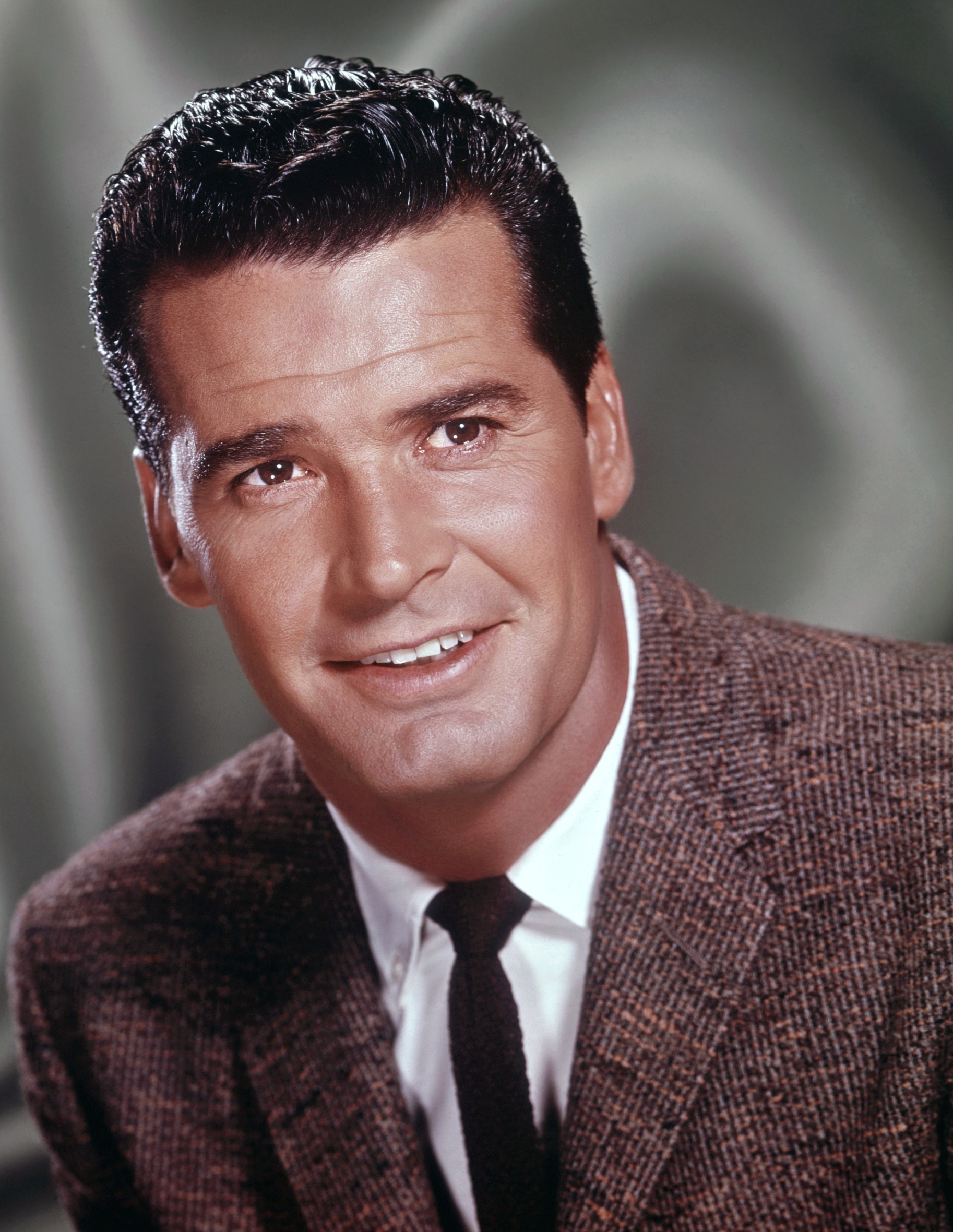
Tell me Troy Tempest isn’t modelled on James Garner!
Stingray also has another claim to fame, it seems, as the first television series in the UK to be filmed completely in colour, even though it will be some years yet before Britain gets colour television (and probably a decade yet before we see it in Australia). I understand has been done in order to improve the possibility of sales into the American market, so I hope it works, and the Andersons make enough profit from Stingray to embark upon a new series in the not-too-distant future.
In the meantime, I look forward to belatedly seeing Fireball XL5 and enjoy it as an interim step between Supercar and Stingray!
[Come join us at Portal 55, Galactic Journey's real-time lounge! Talk about your favorite SFF, chat with the Traveler and co., relax, sit a spell…]

![[June 22, 1965] Standby for Action! (Gerry Anderson’s <i>Stingray</i>)](https://galacticjourney.org/wp-content/uploads/2020/06/650622stingray_title-640x372.jpg)
